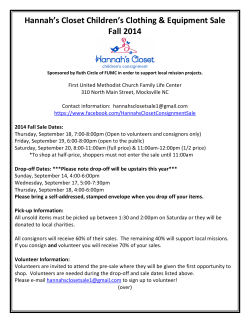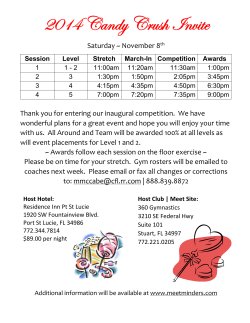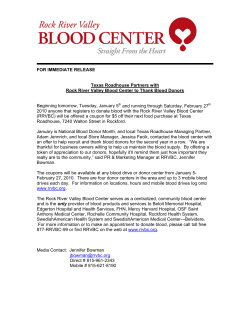
workshop full description. - Tex-Fab
TEX-FAB 2015 HOUSTON Thresholds: Computational Design and Digital Fabrication Workshop Thursday, 3/26 (9:00am-1:00pm and 2:00pm-6:00pm), Friday, 3/27 (9:00am-1:00pm), Saturday, 3/28/15 (9:00am1:00pm and 2:00pm-6:00pm) and Sunday, 3/29/15 (9:00am-1:00pm) Instructors: • • • Ronnie Parsons o Mode Lab // Partner, Director of Learning Innovation Evan Greenberg o Architectural Association // Studio Master, Emergent Technologies and Design Andrew Reitz o Mode Lab // Design Associate Thresholds - the magnitude or intensity that must be exceeded for a certain reaction, phenomenon, result, or condition to occur or be manifested Workshop Description: How can we use technology to measure what we perceive but cannot quantify and how can this information be leveraged in the design process? This workshop invites participants to think about the relationship between what we see and how we understand our surroundings. We constantly process information in the environment through our senses: from feeling the change in air temperature when walking from the desk to the window to noticing the subtle differences of color as the sun reflects off the wall. But how can we begin to understand when air feels warmer than warm, or the wall looks bluer than blue? Within these gradient spaces are thresholds, containing intensities of environmental data that transform the unseen into tactile computable information. By transporting this physical data into the digital, computational tools can be employed to alter, mediate and amplify this information in the design of new environments. Using digital recording techniques alongside parametric modelling tools in Rhino’s Grasshopper plug-in, workshop participants will scan surfaces from their surroundings for latent information, define gradients of environmental intensity, and design and fabricate material systems to amplify their effects. Through computational means, we will explore the space between material intensities and the body’s sensorial envelope. In a hands-on learning environment, workshop participants will develop an understanding of how the integration of digital and physical computational techniques enable the discovery and production of material constructs that alter the environment around us. Learning Outcomes: • Develop an understanding of the design possibilities provided by the integration of physical and digital computation • Familiarity with 3D scanning techniques using Kinect • Familiarity with parametric modelling tools and their ability to integrate various data types within a single model • Acquire techniques to alter environmental effects through the manipulation of material constructs Workshop Breakdown: • Participants will consider a surface with interesting physical properties, and using a Kinect scan a surface within their physical space (ie. wall, floor, ceiling, skin, etc.) • The collected 3D data will be translated into geometry within a digital environment in Rhino’s Grasshopper plug-in • Using parametric techniques, the data collected will be analyzed and evaluated according to earlier identified parameters of interest • Participants will identify an environmental threshold, or boundary condition between gradients that provides an opportunity for alteration of its physical effect on the environment • Through physical and digital computational modelling, and fabrication using analog tools and large-format laser cutters, participants will design and build material systems capable of amplifying the environmental intensities studied digitally • Work will be featured in an on-site exhibition Technology • • • • • Rhino5 Grasshopper (plus add-ons) Microsoft Kinect (provided by instructors) Custom Software (provided by instructors) The workshop will utilize digital fabrication hardware including a large-format laser cutter supported by the Keeland Fabrication Facility and will conclude with an exhibition of the work and prototypes produced over the event. Go to Workshop Registration
© Copyright 2025


















